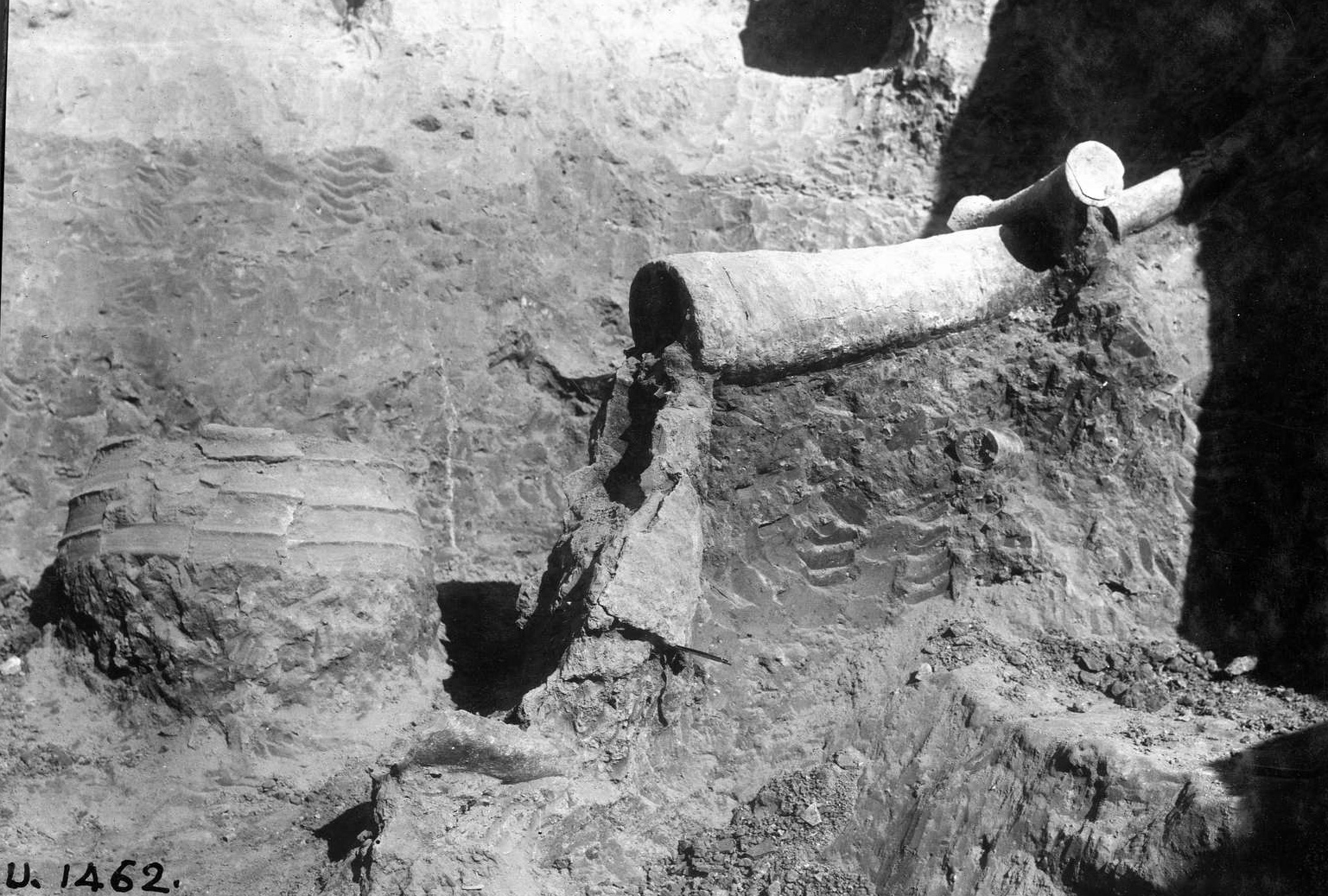MR. WOOLLEY’S first official report on the work at Ur of the Chaldees came to the Museum early in January. The initial undertaking this year was the tedious and laborious one of removing an old dump more than seven metres high which overlay the site chosen for the season’s work. The workmen were then divided into two groups, one working in the cemetery area, the other on the prehistoric town site.

Museum Image Number: 191462
In the cemetery they are approaching, but have not yet reached, the level at which good tombs may be expected, although plenty of graves, many showing evidence of cremation, have been found. Mr. Woolley feels that the work this year has already proved of great scientific importance, as the well-marked stratification of the ground in which he is working may enable him to establish definite chronology for the cemetery.
Carrying the excavation on the prehistoric town site down consistently over the area to a depth of five metres, Mr. Woolley identified five levels, and five separate building-plans have been drawn up. At the fifth level the character of the construction changes, and the abundant pottery includes wares such as have been found in the lowest levels at Kish, indicating a very remote period. Interesting features of the building plans are the habitual use of bricks laid herring-hone fashion, and, in the fifth level, of a regular drain pipe leading through a house wall out into the street [Plate III]. In the third period is the earliest definite drainage system known, vertical ring-drains connected by slanted pipes going down to sump-pits. In the drains of the First and Third Dynasties Mr. Woolley feels he has found sufficient evidence to prove his theory that the purpose of the early drains was a religious one, that they were used as receptacles for offerings made to gods of the netherworld.

